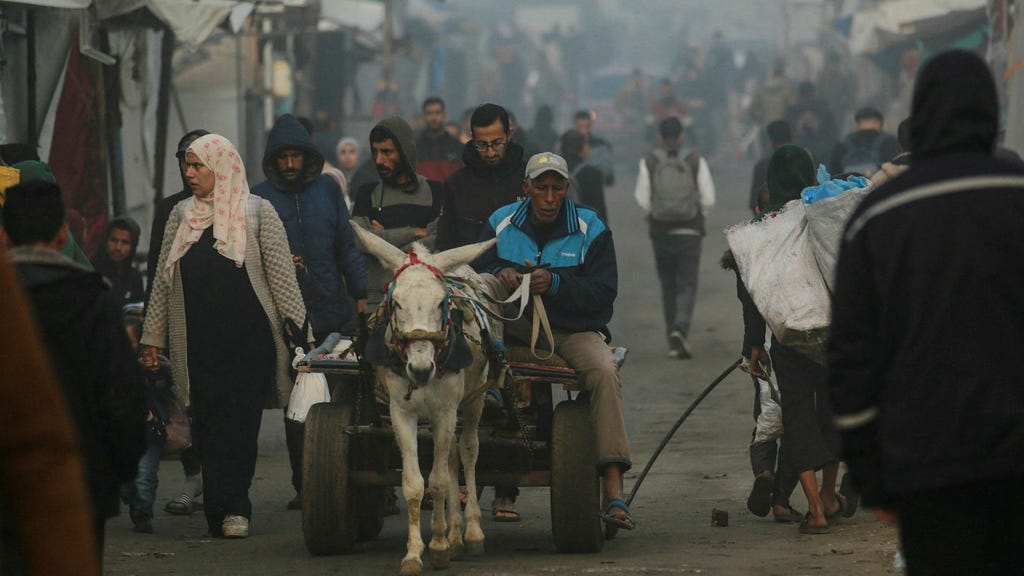The impending ceasefire in the Gaza conflict, anticipated on Sunday, presents a perplexing outcome. Hamas, the instigator of the war, retains its grip on the Gaza Strip, a development largely attributed to the policies of former US President Donald Trump. While the immediate cessation of hostilities brings a much-needed respite to the beleaguered population, the underlying political dynamics remain volatile and raise serious concerns about the long-term stability of the region. The ceasefire, in essence, freezes the conflict rather than resolving it, leaving the root causes of the conflict unaddressed and potentially setting the stage for future eruptions of violence.
The Trump administration’s approach to the Israeli-Palestinian conflict, marked by a stark pro-Israel stance, inadvertently empowered Hamas. Trump’s recognition of Jerusalem as Israel’s capital, the relocation of the US embassy, and the drastic cuts in aid to the Palestinian Authority weakened the Palestinian Authority’s authority and legitimacy, creating a vacuum that Hamas readily exploited. These policies, coupled with the neglect of the peace process and the dismantling of existing diplomatic frameworks, effectively sidelined the Palestinian Authority and strengthened Hamas’s position as the sole representative of the Palestinian people in Gaza. This shift in power dynamics played a significant role in the escalation of tensions that ultimately led to the current conflict.
Hamas, designated as a terrorist organization by many countries, capitalized on the Trump administration’s policies and the resulting disillusionment among Palestinians to consolidate its power. The organization presented itself as the champion of Palestinian resistance against Israeli occupation and benefited from the perception that the Palestinian Authority was ineffective in securing their rights. The absence of a credible peace process and the lack of international pressure on Israel to address Palestinian grievances further fueled Hamas’s narrative and solidified its support base. The current conflict, despite the devastating human cost, has arguably enhanced Hamas’s standing in the eyes of some Palestinians, further solidifying its political control over the Gaza Strip.
The irony of the situation is that Trump’s policies, intended to strengthen Israel’s security, may have inadvertently achieved the opposite. By weakening the Palestinian Authority and empowering Hamas, the Trump administration created a more volatile and unstable environment. Hamas, emboldened by its strengthened position, launched a surprise attack against Israel, triggering a devastating conflict that has claimed hundreds of lives and caused widespread destruction. While Israel responded with overwhelming military force, the conflict has highlighted the enduring challenge posed by Hamas and the limitations of military solutions in achieving lasting peace.
The Biden administration, having inherited this complex and precarious legacy, faces the daunting task of restoring stability and reviving the peace process. The immediate priority is to secure a durable ceasefire and address the urgent humanitarian needs of the Gazan population. However, the long-term challenge will be to address the underlying political and economic grievances that fuel the conflict. This requires engaging with both Israeli and Palestinian leaders, rebuilding trust between the parties, and working towards a two-state solution that ensures the security and self-determination of both Israelis and Palestinians.
The path to peace remains arduous and uncertain. The Gaza conflict serves as a stark reminder of the fragility of the situation and the urgent need for a renewed commitment to finding a lasting solution. The international community must play a more active role in mediating the conflict, providing humanitarian assistance, and supporting the Palestinian Authority in rebuilding its capacity and legitimacy. Ultimately, a sustainable peace can only be achieved through a political process that addresses the root causes of the conflict and fulfills the aspirations of both Israelis and Palestinians for a secure and peaceful future. The current ceasefire, while welcome, is merely a pause in the ongoing conflict. The real challenge lies in transforming this fragile truce into a lasting peace.














